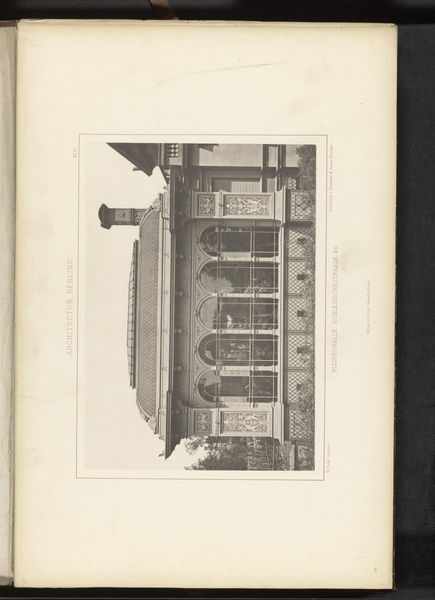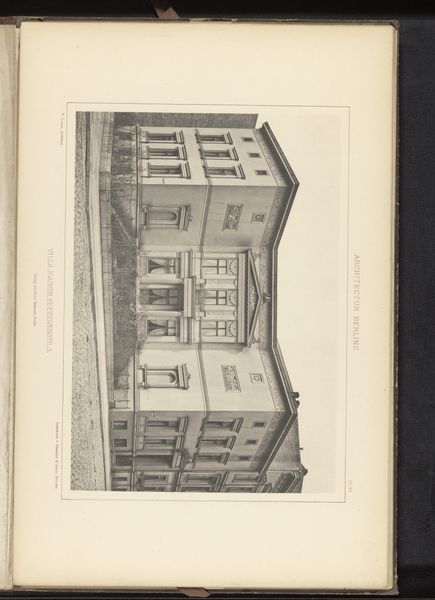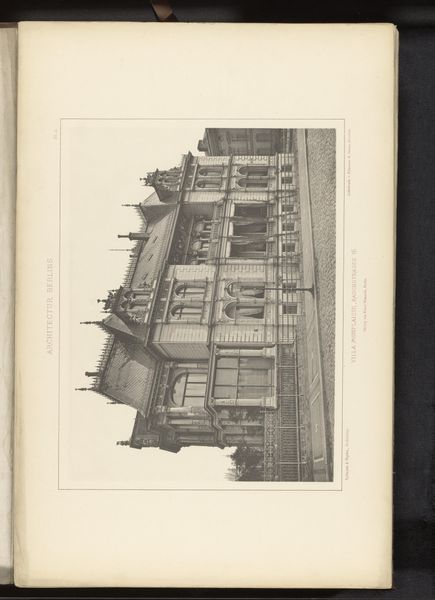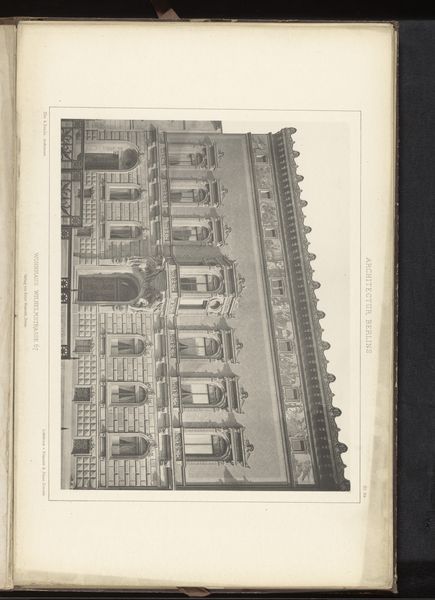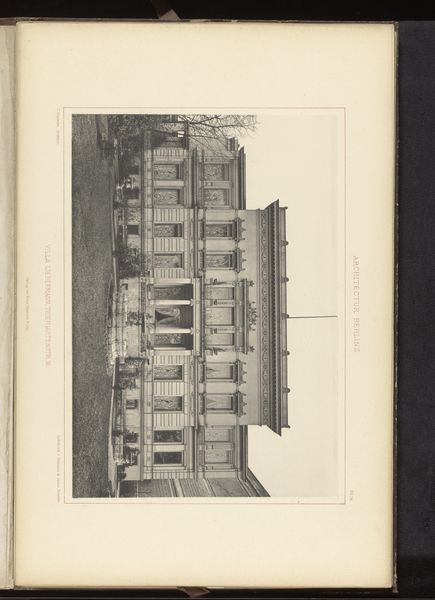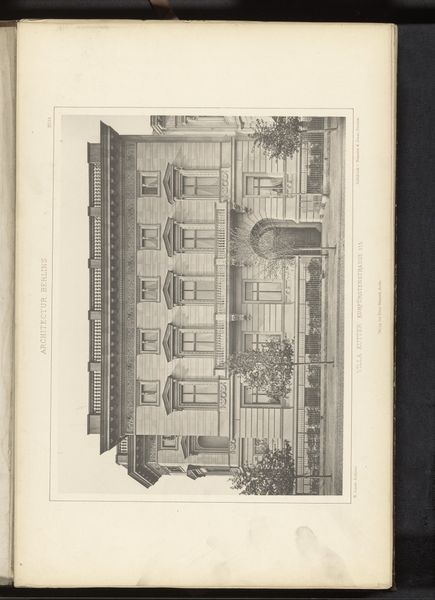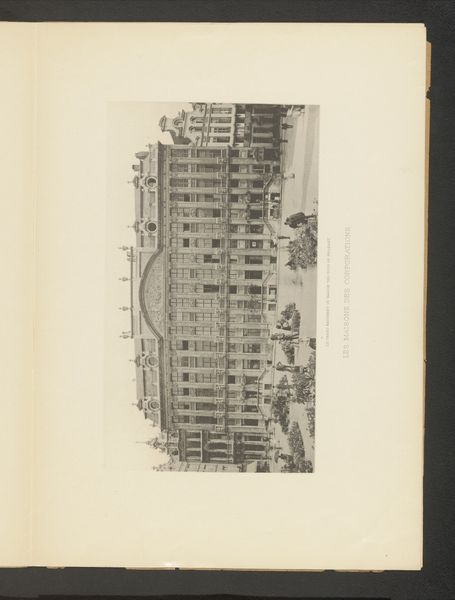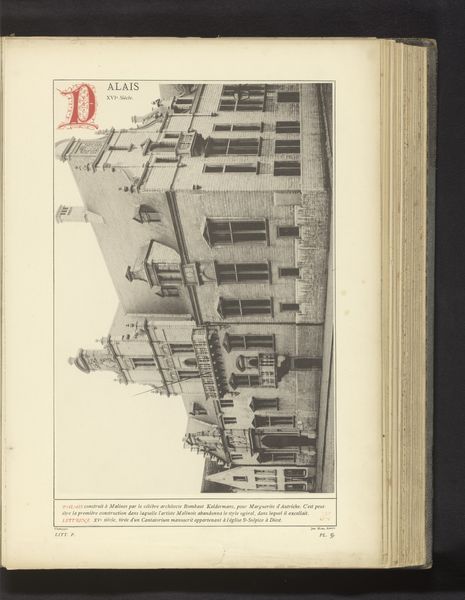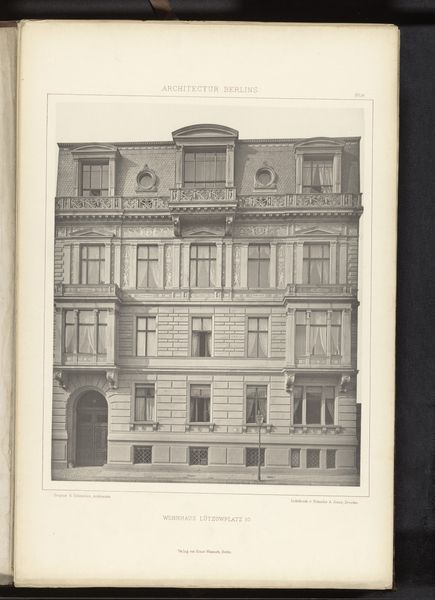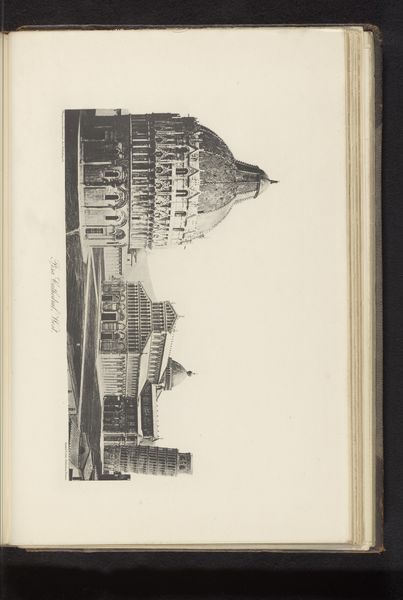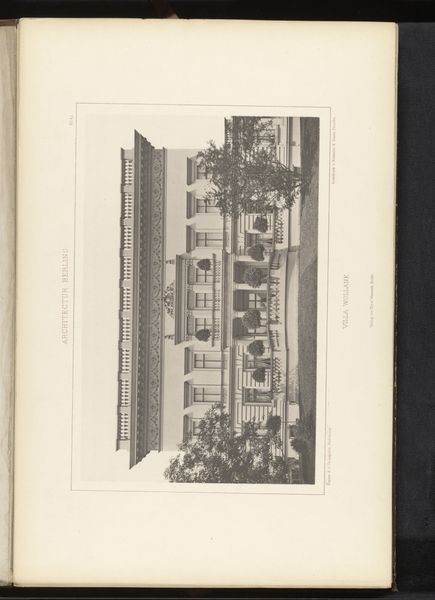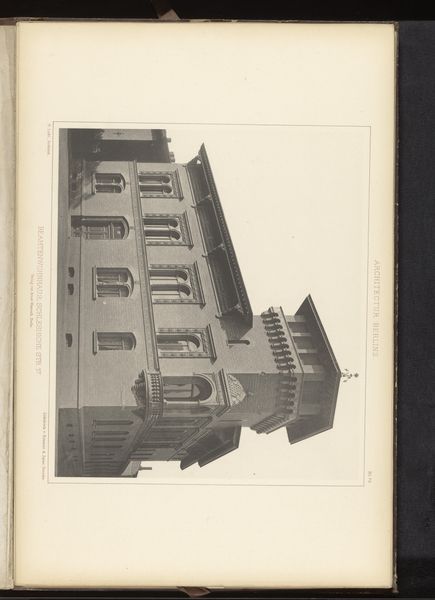
Gezicht op een woonhuis aan de Lützowplatz 7 in Berlijn, Duitsland before 1877
0:00
0:00
Dimensions: height 240 mm, width 265 mm
Copyright: Rijks Museum: Open Domain
Editor: So this is an anonymous engraving, made before 1877, titled "View of a House on Lützowplatz 7 in Berlin, Germany," and it's held at the Rijksmuseum. The level of detail is really striking, almost photographic in its precision. How do you interpret this kind of architectural rendering? Curator: It’s interesting how seemingly objective depictions of architecture become embedded within socio-political contexts. Think about Lützowplatz in 19th-century Berlin; this image presents a face of ordered prosperity aligning with the rising influence of the bourgeoisie and their embrace of Neoclassical ideals in their public spaces and residences. Does this representation suggest anything about the values being promoted or the power structures at play during this period? Editor: It's definitely imposing and suggests stability and maybe even a sense of establishment? Almost like a display of success? Curator: Exactly. The precision, almost technical, aesthetic is crucial here, because it conveys a sense of control and rationality – qualities admired and cultivated by the emerging professional classes. Images like this served to promote a specific vision of urban life and bourgeois identity, carefully curated and propagated through print culture. What public function do you think this engraving may have had, considering its architectural precision? Editor: I guess this could have been intended to show an ideal, maybe something for others to aspire to, or to be proud of if this were your neighborhood? Curator: Precisely. It invites viewers to participate in this aspirational narrative and reinforces a sense of belonging. Reflecting on the image, the anonymous creator emphasizes not just a building, but a social and cultural moment framed through the lens of architecture and civic identity. Editor: I see that now, how it shows a statement about that society in general rather than just this one building. It gives me a different perspective to view these kinds of cityscape artworks. Curator: Absolutely, that's the beauty of seeing art within a broader history; it can teach us much about how we're encouraged to engage with society and space.
Comments
No comments
Be the first to comment and join the conversation on the ultimate creative platform.
